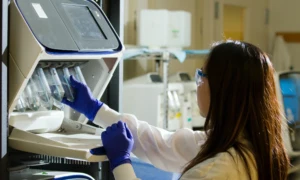The effectiveness of lasik laser eye surgery depends on several factors that work together to produce the best results. Candidates must have stable refractive errors, good general health, and reasonable expectations. Corneal thickness is crucial in determining operation viability and reducing complications. Refractive stability and the surgeon’s expertise and competence are essential variables, whereas technological and equipment developments improve accuracy. Millions of individuals will be able to acquire clear eyesight without the use of glasses or contact lenses.

Postoperative care, patient compliance, controlling expectations, and psychological considerations all contribute to LASIK’s overall effectiveness. It is critical for both patients and healthcare professionals participating in the decision-making process to have a comprehensive awareness of these contributing elements. While LASIK is usually regarded as a safe and successful technique, its success can be altered by various circumstances. Understanding these characteristics is critical for both LASIK patients and healthcare professionals participating in the treatment.
Patient Selection:
Appropriate patient selection is an essential factor in LASIK success. Candidates for LASIK should have stable vision prescriptions, be in excellent general health, and have reasonable expectations for the surgery’s outcomes. Specific medical issues, like autoimmune diseases or uncontrolled diabetes, may exclude patients from being ideal candidates for LASIK. A complete preoperative assessment by an experienced ophthalmologist is required to identify patients likely to benefit from the treatment.
Corneal Thickness:
Corneal thickness is an essential consideration in LASIK surgery. The treatment includes reshaping the cornea to correct refractive problems, and having enough corneal tissue is critical for success. Patients with thin corneas may be more prone to issues such as corneal ectasia, in which the cornea weakens and bulges. Technological advancements, such as femtosecond lasers, have increased the precision of corneal flap production, allowing doctors to conduct LASIK on patients with thinner corneas.
Patient Expectations and Psychological Elements:
Positive psychological elements and realistic expectations help improve LASIK’s overall effectiveness. Patients who understand the prospective results, including potential side effects and limits, are more prepared to deal with postoperative changes. A good attitude and dedication to healing improve patient happiness and help LASIK’s overall success.
Postoperative Care and Patient Compliance:
lasik laser eye surgery success goes beyond the operating room to postoperative care and patient compliance. Following the surgeon’s postoperative care recommendations, including taking prescribed medications and attending follow-up appointments, is critical for the best healing and visual results. Patients who follow postoperative instructions are more likely to recover smoothly and get the desired results after LASIK.
What role does patient cooperation have in LASIK surgical success?
Patient participation is critical to LASIK (Laser-Assisted In Situ Keratomileusis) laser eye surgery success. The ability to follow preoperative and postoperative instructions substantially influences the overall result. Patients are urged to follow standards such as ceasing contact lenses before surgery, attending all preoperative assessments, and providing pertinent medical history. LASIK has become increasingly popular due to its high success rates, minimal discomfort, and rapid recovery. This article explores the key aspects of LASIK laser eye surgery and highlights the advancements that have contributed to its widespread acceptance.
Adherence to recommended drugs, such as antibiotics and anti-inflammatory eye drops, is critical for recovery after surgery. Patients should also attend all planned follow-up appointments to track progress and address any issues immediately. Follow these recommendations to avoid raising the risk of problems and undermining the procedure’s efficacy. As a result, active engagement and following the surgeon’s suggestions are critical for a good LASIK outcome.
Conclusion:
LASIK laser eye surgery has revolutionized vision correction, providing many people with a safe and effective treatment. Patient selection, corneal thickness, refractive stability, surgeon expertise, technology, postoperative care, and patient expectations play a role in LASIK’s success. As technology advances and surgical procedures change, LASIK success rates are expected to rise, allowing more individuals to live without the limitations of glasses or contact lenses.





























